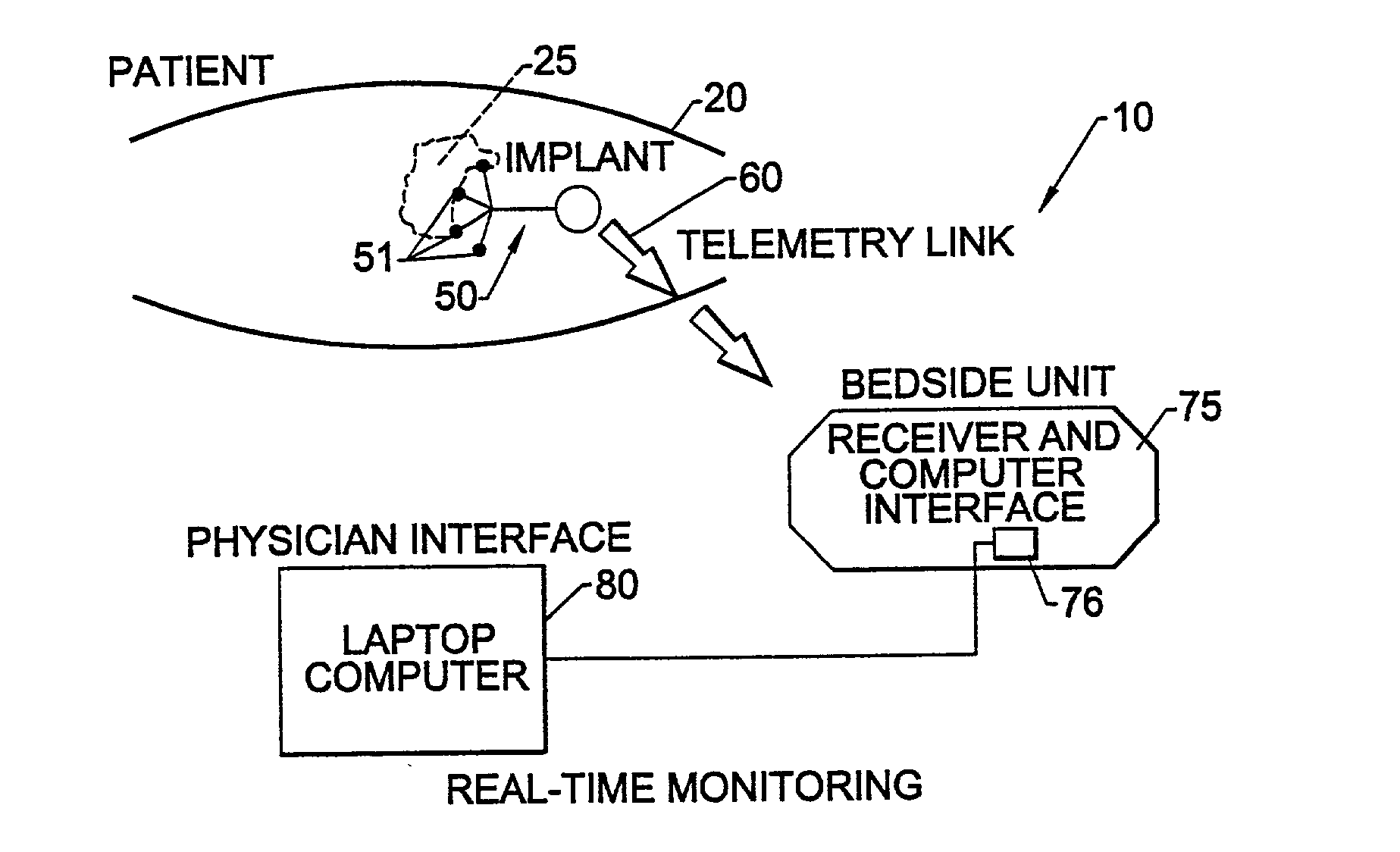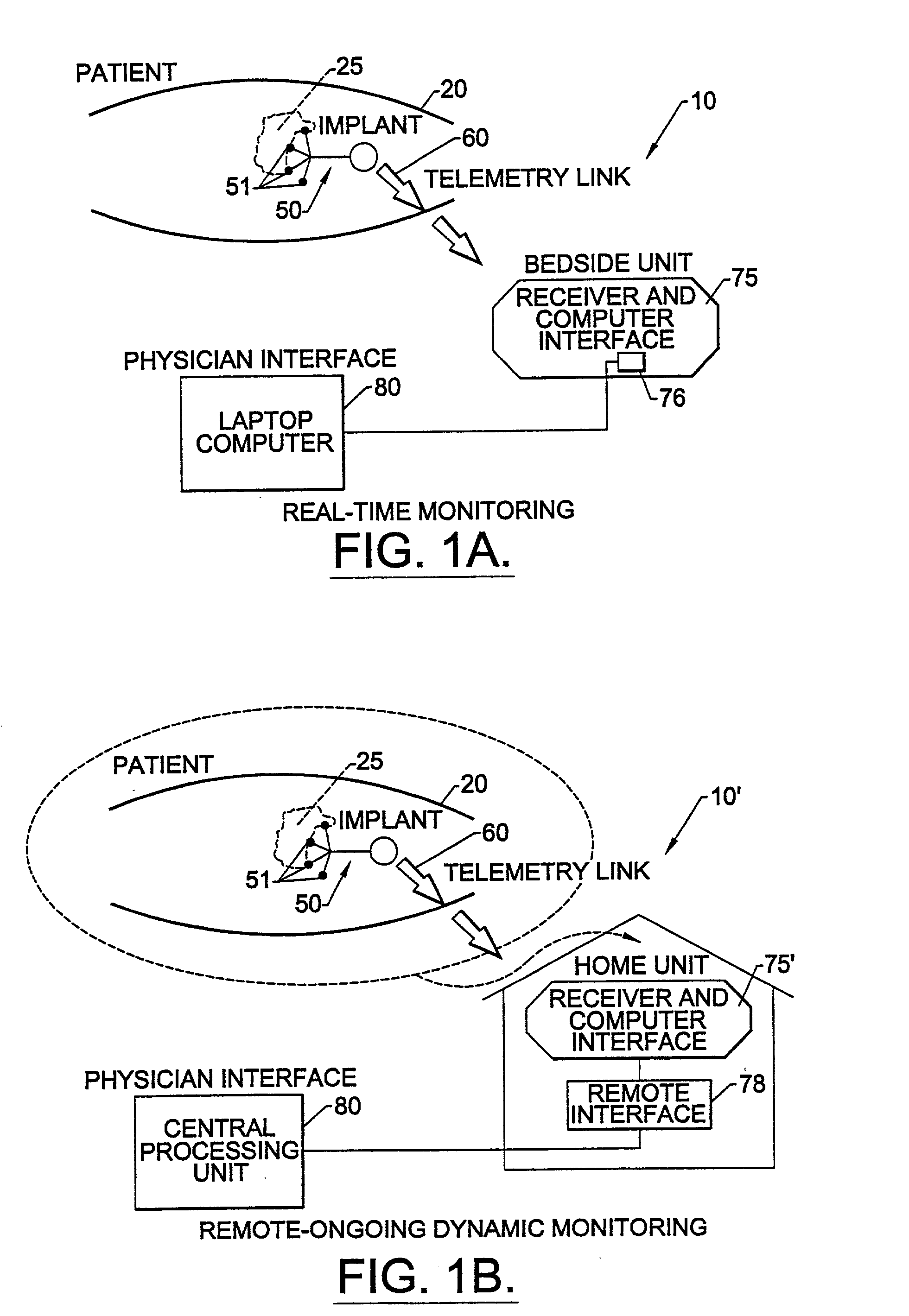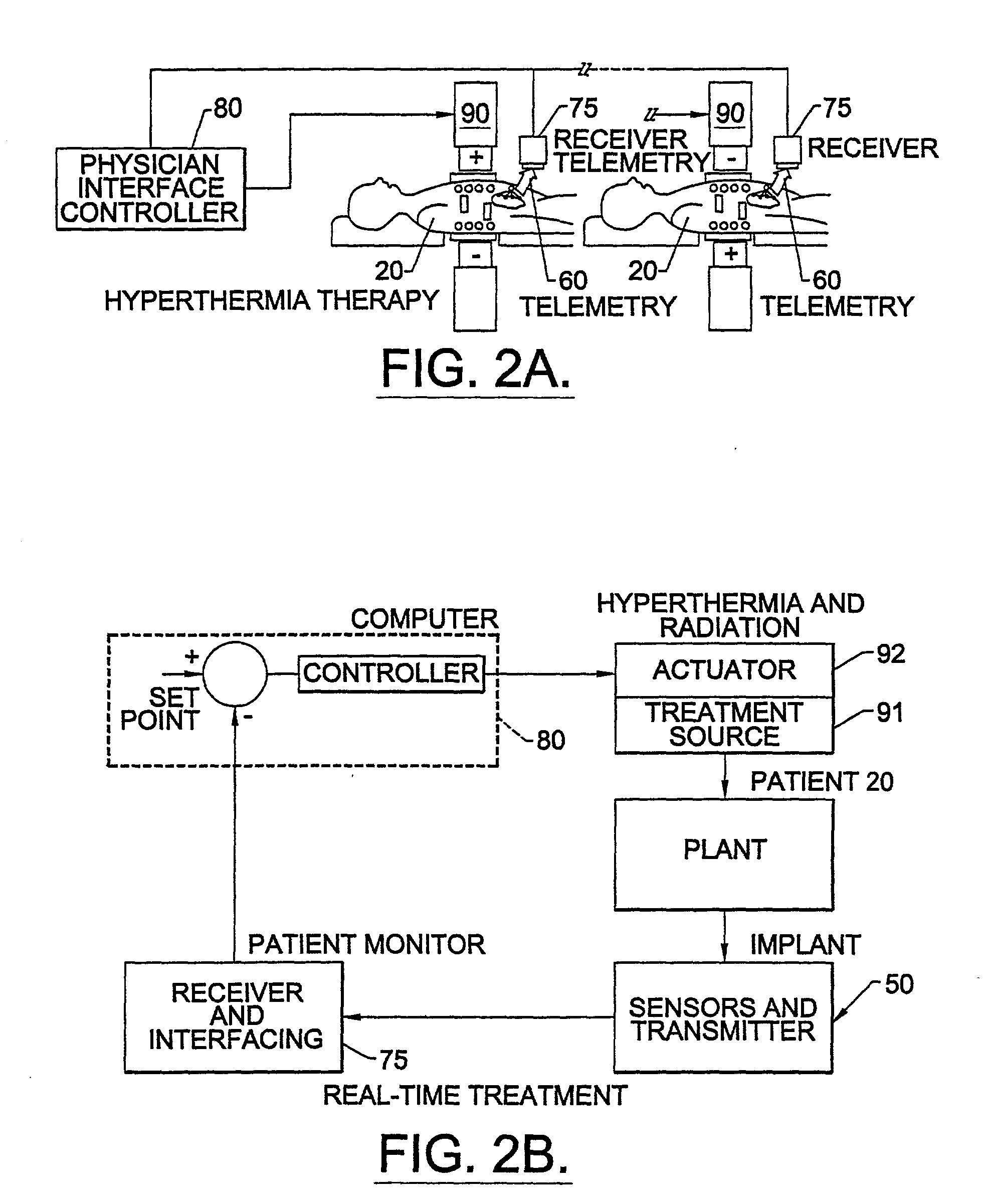Methods, systems, and associated implantable devices for dynamic monitoring of physiological and biological properties of tumors
a tumor and physiological and biological technology, applied in the field of tumor physiological and biological properties dynamic monitoring, can solve the problems of increasing tumor cell kill, unable to provide accurate information, and unable to efficiently monitor changes on a real time basis, so as to improve treatment effect or favorable
- Summary
- Abstract
- Description
- Claims
- Application Information
AI Technical Summary
Benefits of technology
Problems solved by technology
Method used
Image
Examples
Embodiment Construction
[0183] A patient presents with an unresectable lung cancer (adenocarcinoma or squamous cell). The conventional accepted treatment is a combination of radiation and chemotherapy. The radiation is given everyday, Monday through Friday, and the chemotherapy (taxol and cisplatin) are administered either once a week in low doses or every three weeks in higher doses. All patients are treated in substantially the same manner and the expected response rate is between 50-75%. Therapy is not individualized despite the fact that it is known that oxygen levels, pH, and particularly, cell doubling times, may vary widely between patients.
[0184] The availability of the methods, systems, and implantable sensors of the present invention which are configured to monitor pH, oxygen, and radiation, now offer a more customized approach to therapy. The sensors can be positioned in situ in the tumor at different penetration depths or across different regions of the tumor to provide regional specific inform...
PUM
| Property | Measurement | Unit |
|---|---|---|
| temperature | aaaaa | aaaaa |
| temperatures | aaaaa | aaaaa |
| diameter | aaaaa | aaaaa |
Abstract
Description
Claims
Application Information
 Login to View More
Login to View More - R&D
- Intellectual Property
- Life Sciences
- Materials
- Tech Scout
- Unparalleled Data Quality
- Higher Quality Content
- 60% Fewer Hallucinations
Browse by: Latest US Patents, China's latest patents, Technical Efficacy Thesaurus, Application Domain, Technology Topic, Popular Technical Reports.
© 2025 PatSnap. All rights reserved.Legal|Privacy policy|Modern Slavery Act Transparency Statement|Sitemap|About US| Contact US: help@patsnap.com



